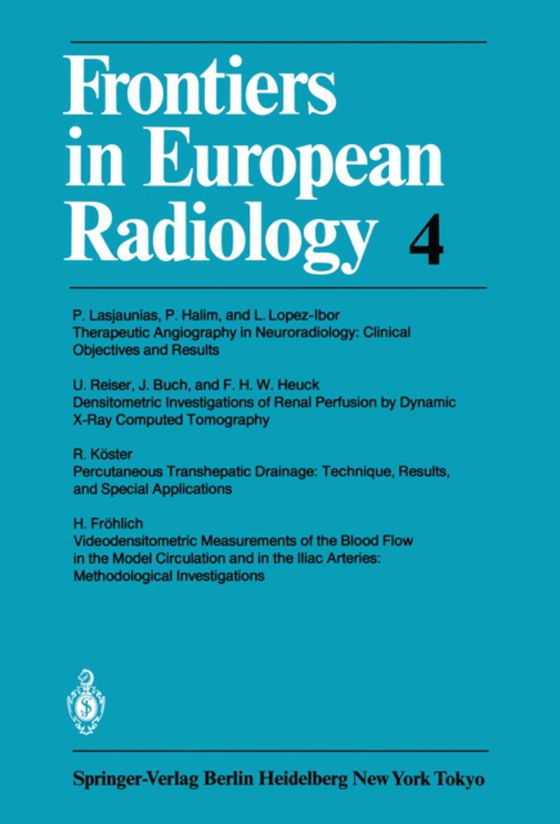
Frontiers in European Radiology e-bog
875,33 DKK
(inkl. moms 1094,16 DKK)
The quantitative analysis of blood flow within central and peripheral blood vessels has attracted more and more interest, for with the rapid developments in vascular surgery and the introduction of percutaneous transluminal angioplasty, it is becom- ing increasingly important to be able to measure regional blood flow in man. In clinical radiology, angiography has been used predominantly from th...
E-bog
875,33 DKK
Forlag
Springer
Udgivet
6 december 2012
Genrer
MKS
Sprog
English
Format
pdf
Beskyttelse
LCP
ISBN
9783642697173
The quantitative analysis of blood flow within central and peripheral blood vessels has attracted more and more interest, for with the rapid developments in vascular surgery and the introduction of percutaneous transluminal angioplasty, it is becom- ing increasingly important to be able to measure regional blood flow in man. In clinical radiology, angiography has been used predominantly from the point of view of its morphological applications. However, theoretically angiography may also be regarded as a specific application of indicator-dilution measurements of blood flow. The indicator is contrast medium (CM), the changing concentration of which is re- corded by cinematography or video-electronic systems at sites downstream from the point of injection. The curves of density thus obtained correspond to indicator-di- lution curves. The blood flow can be calculated from the concentration-time curves ofCM in much the same way as it is estimated from other indicator-dilution curves. In our early work with clinical application of videodensitometric measurement of blood flow in the iliac artery, we found that this method did not offer as high a degree of accuracy as one would have expected from investigations by other authors. We saw that we needed to examine the following problems: 1. We had to investigate whether our conventional X-ray equipment and video- densitometer could be viewed as a linear measuring system. To what extent do unavoidable nonlinear changes in the measuring signals influence the blood flow values? 2.
 Dansk
Dansk

